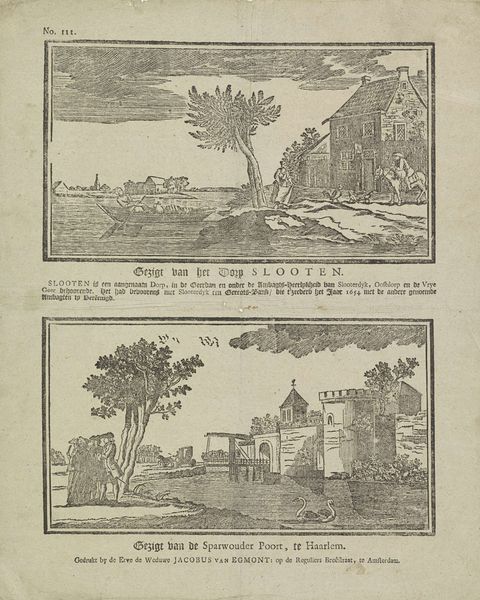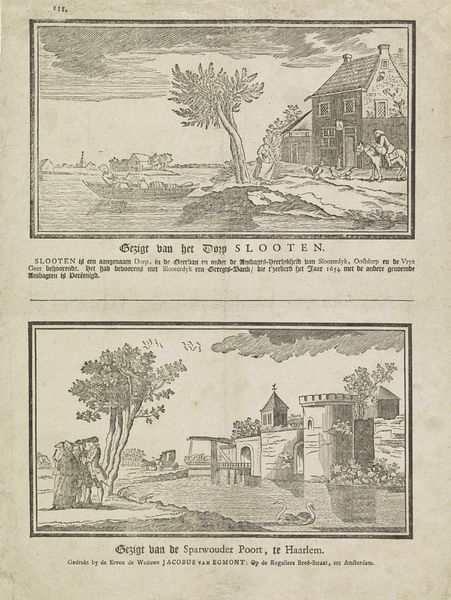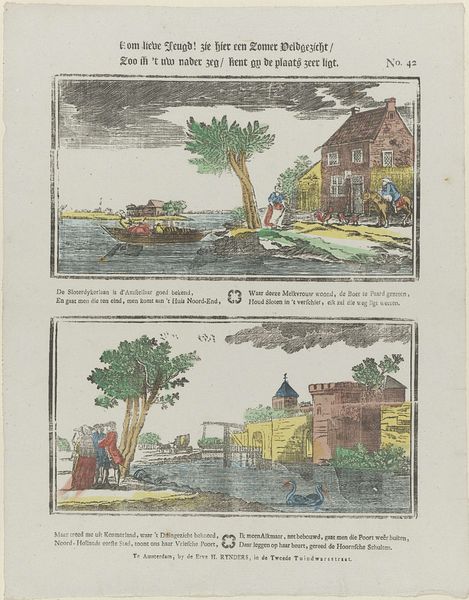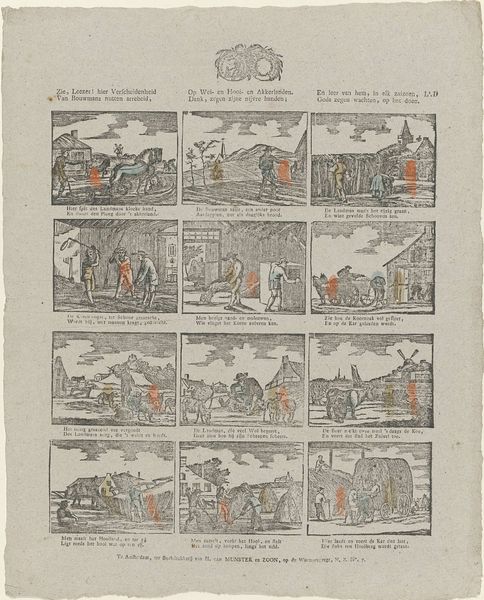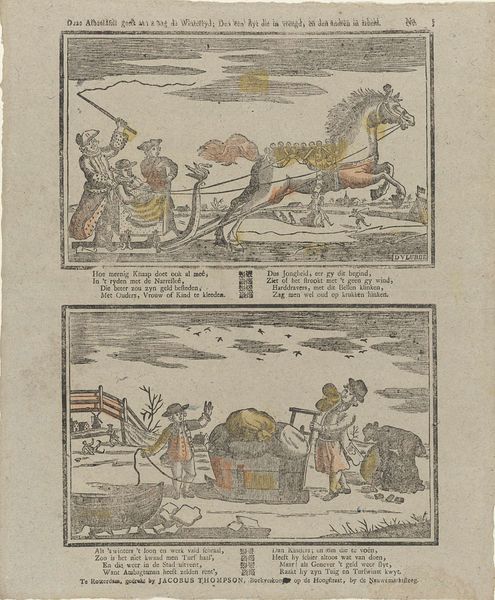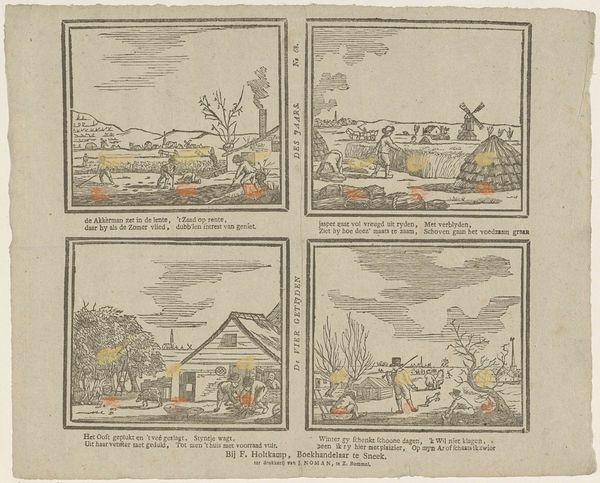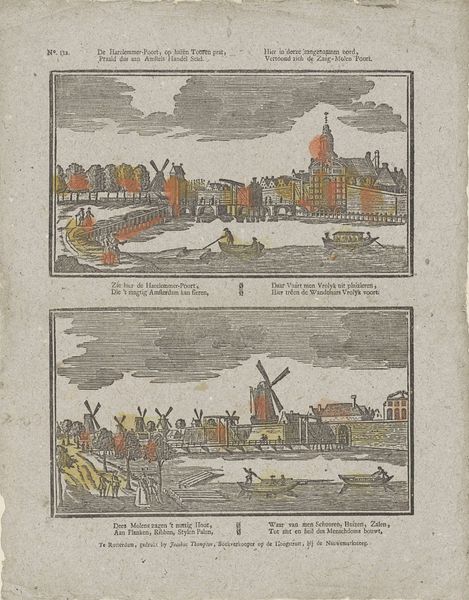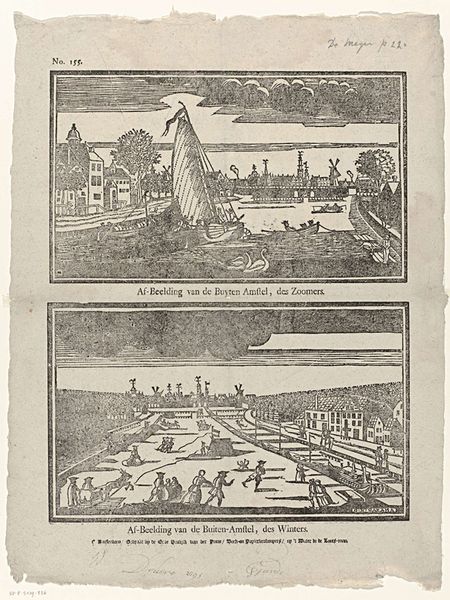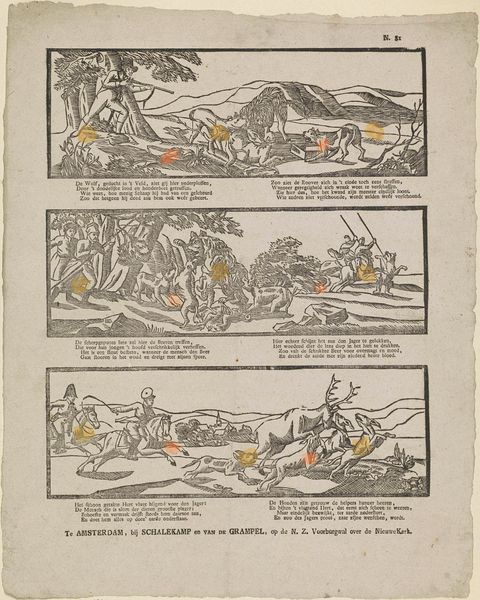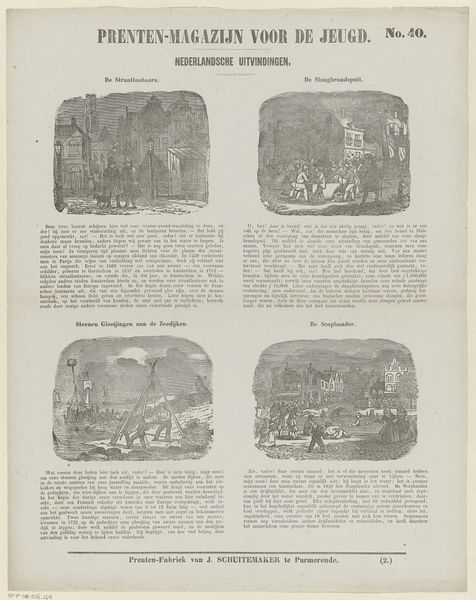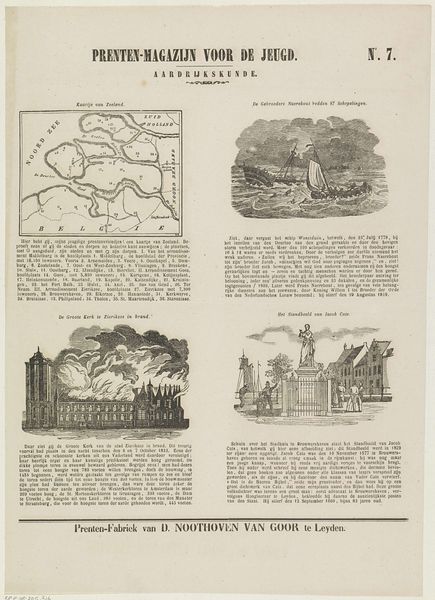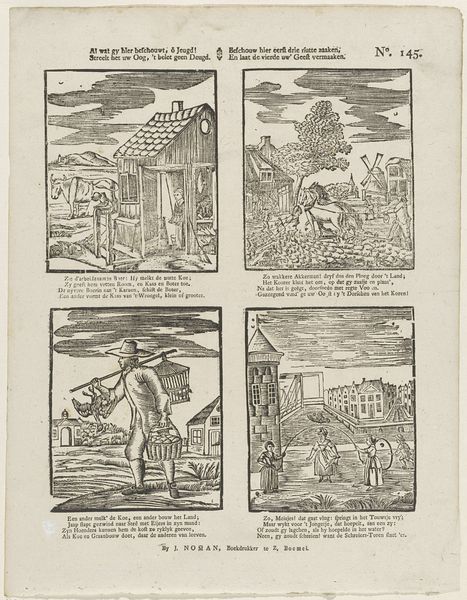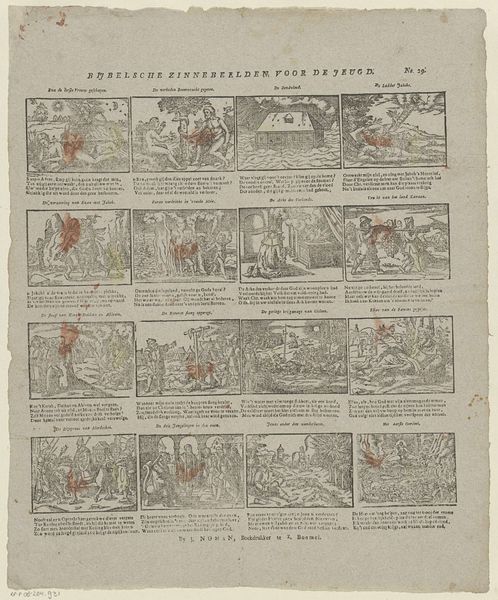
Kom lieve jeugd! zie hier een zomer veldgezicht / Zoo ik 't uw nader zeg / kent gy de plaats zeer ligt 1831 - 1854
0:00
0:00
print, engraving
#
narrative-art
# print
#
landscape
#
genre-painting
#
engraving
Dimensions: height 397 mm, width 325 mm
Copyright: Rijks Museum: Open Domain
Curator: Look at this engraving. Made by Erve H. Rynders sometime between 1831 and 1854, it's titled "Kom lieve jeugd! zie hier een zomer veldgezicht / Zoo ik 't uw nader zeg / kent gy de plaats zeer ligt", now residing here at the Rijksmuseum. What strikes you first about it? Editor: It's quite charming, almost like a storybook illustration with its distinct sections. The upper landscape scene feels peaceful, with figures dotting the rural scenery, but something in the sharp angles and slightly chaotic linework hints at underlying social tensions, don't you think? Curator: I'd say your feelings are valid; consider that this piece belongs to a larger history of printed landscapes circulated among the Dutch bourgeoisie. Printmaking enabled broader distribution of imagery, and allowed artists to circulate not only idyllic countryside views but also commentaries on urbanization and the changing role of labor and class. The scenes chosen reflect pride in local identity and landmarks. Editor: Ah, I see that historical and geographical encoding working. But the placement of the text also affects how I see it. Look at how the textual elements, particularly that initial phrase imploring "dear youth," almost functions as an open call—positioning viewers as active participants invited to decipher familiar localities. I wonder, was this primarily a didactic tool for children, meant to instill certain cultural values, or was it broader in scope? Curator: The combination of imagery and text definitely suggests a didactic function, and helps anchor the visual in a local context, so I would guess the viewer was at least Dutch, or someone familiar with the locations presented in the artwork. As for the cultural values you mentioned, I see an appeal to local identity and possibly nostalgia for the rural life depicted. I'm reminded that the engraver included two very distinct vignettes, each complete with people in the scenes to possibly create an appeal that's related to class. It almost evokes an aspirational narrative to strive towards a comfortable and beautiful Dutch setting. Editor: Yes! Almost encouraging pride. Thank you; my view of this piece has evolved into a nuanced reflection of historical roots and visual communication from this conversation. Curator: Indeed, viewing through the lens of cultural circulation reveals its narrative depth; thank you for helping create a multilayered view!
Comments
No comments
Be the first to comment and join the conversation on the ultimate creative platform.
